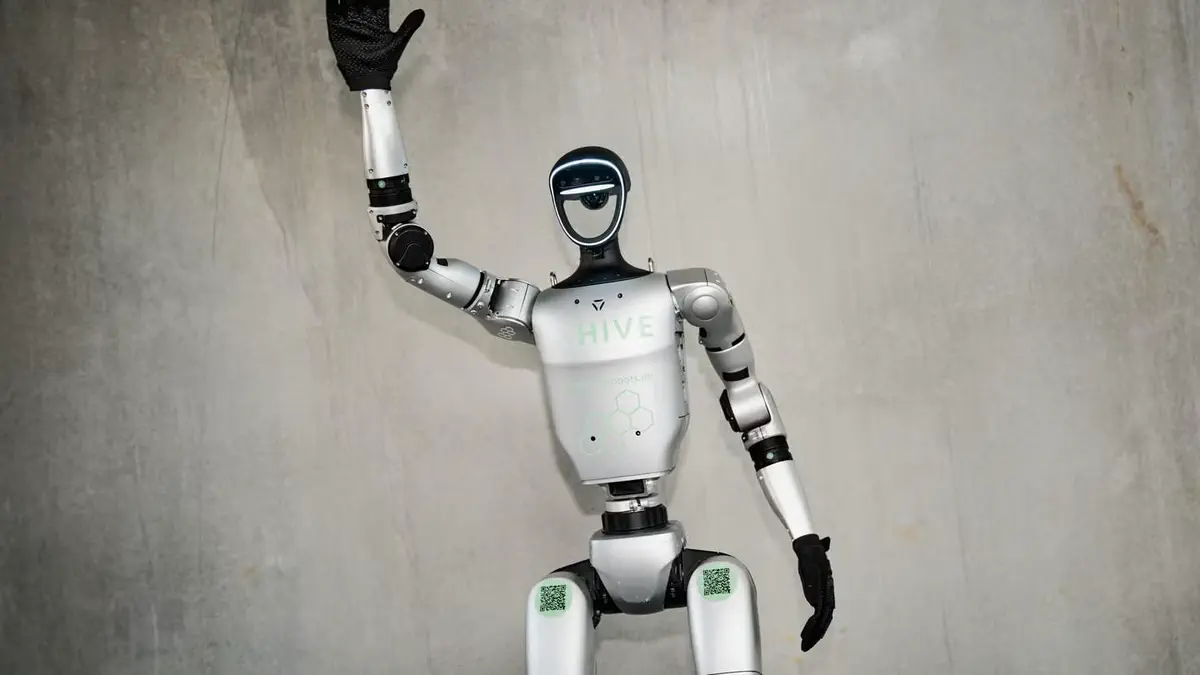How do we communicate with robots?
 Thomas Traasdahl / https://www.na.se/2025-08-22/sa-kommunicerar-du-med-en-robot/
Thomas Traasdahl / https://www.na.se/2025-08-22/sa-kommunicerar-du-med-en-robot/
I have been writing for NA again! This time about how we communicate with robots. The article in Swedish is available here. In this page is the English version ! Enjoy !
How do you know how to communicate? Communication is universal and innate. We were all born with the ability to communicate, and all humans do communicate. Animals communicate. Even plants communicate. We also see inter-species communication. We communicate with animals. But communication is also cultural and socially constructed. We do not communicate the same way in Sweden, in Japan, or in South Africa. We do not communicate the same way if we come from a rich or poor background. We do not communicate the same way at 10, 40, or 65 years old. And teenagers today certainly do not communicate the same way teenagers communicated 40 years ago.
So what happens when our communication partner is not a human or an animal anymore, as it has been for millennia, but a robot? Robots, and more generally Artificial Intelligence, are strange entities. They are obviously not alive, but they are programmed to show some form of agency. So how do we communicate with an AI? As a researcher in Human-AI communication, this question is the core of my research interests.
When we communicate with an AI, we will naturally employ some of the communication habits and constructs that we have learned during our previous interactions with humans and animals to guide us. We will try to make sense of this unknown partner through previous experiences. To do this, we will get influenced by how the AI looks and behave. If it looks childish, or cartoonish, we may talk to it as we would talk to a child. We will communicate to animal-resembling robots like we would with a pet. We will say “please” and “thank you” to ChatGPT. And while research has shown that drawing from these previous experiences might in fact help human-AI communication, it has also shown that we are not communicating exactly the same way with AI than we do with humans. For instance, a study in 2017 investigated how people interacted with an AI chatbot on a well-known social media compared to interactions with other humans. They figured out that humans employed different strategies when communicating with the AI than with the humans.
How the AI system is programmed also has a strong impact on how a user will communicate with it. The persona displayed by an AI influences what characteristics we attribute to it. Does it present more male or female, is it friendly, assertive, arrogant? Is it more robotic or more human-like? And these decisions are entirely controlled by the people who develop these systems. An AI does not have the experience of a human being to draw from. It is a blank sheet on which a team of researchers and developers decide to write their ideas and values. And currently, the big push in the research community is to make communicative AI as human-like and “natural” as possible to facilitate communication. Researchers and engineers develop systems that communicate using language, that can show emotions and social cues in a natural way, all of this to make the interaction as natural as possible. But natural for whom?
Have you ever heard of the W.E.I.R.D. acronym? It stands for “Western, Educated, Industrialized, Rich, Democratic.” It has been coined by the American anthropologist Joseph Heinrich and his collaborators, and is used as way to summarize the background of most participants in psychological research, and by extension in Human-AI Interaction research. Most participants (and in fact, researchers) in these fields come from countries in the “West” (Western Europe or North America), with a high level of education, that are highly industrialized, globally rich, and generally democratic. His research has also shown that there are a lot of psychological differences between populations around the world and that W.E.I.R.D. populations are quite peculiar in their psychology. Therefore, the results drawn from research on these participants are not necessarily applicable to the population in all its diversity.
This diversity issue also holds for other aspects of people’ life, and to the W.E.I.R.D. classification, I would also like to add “Able-bodied,” “Neurotypical,” and “English-speaking.” Research and development often fails to account for people with disabilities or neurodivergent, except when developing systems to “help” them. But on the contrary, systems most often end up exclusionary. Recent work has examined the guidelines that constructors were implementing in voice activated personal assistants (like Siri, Amazon’s Alexa, Google’s Echo…). And they figured out that these guidelines are actively making usability worse for blind and visually impaired users. Blind and visually impaired users benefit greatly from voice assistants for every day tasks. But they also are able to process much faster speech and much more complex spoken sentences than sighted users. By trying to make the interaction more “natural” and using sighted people as default users, researchers and engineers exclude a very large part of the population. Another example is how ChatGPT fails to appropriately answer to people who speak dialects of English that are not American or British English. It usually ends up exaggerating the language’s features, failing to recognize the appropriate tone, thus answering in a far too formal way. Which in turn make the user feel uncomfortable and the tool feel useless.
If we fail to take a large view on diversity, we will exclude a lot of people from the tool we develop. I want to advocate for a much wider view of human-AI communication. Spoken and written texts are not and should not be the ultimate medium for communication, especially when it comes to communicating with an AI system. Images, sounds, gestures, touch, are as many communication modalities that should be explored. So really, how are we going to communicate with AI?